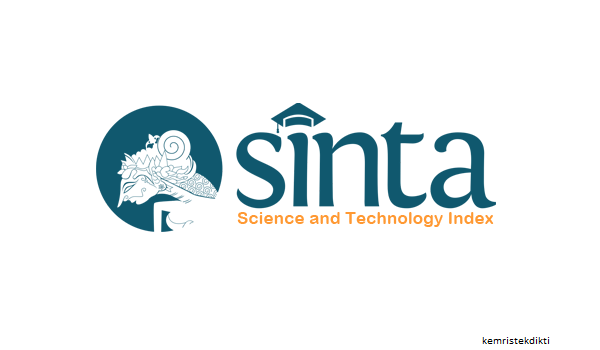Prevalensi Penularan HIV di Kota Tangerang Tahun 2023
DOI:
https://doi.org/10.58185/j-mestahat.v4i2.122Keywords:
HIV, Drugs, PLHIV, CSTAbstract
Human Immunodeficiency Virus (HIV) attacks the human immune system. Risky sexual behavior and injecting drug use are the main factors of HIV transmission. This study aims to describe the prevalence of HIV in Tangerang City, using data from SIHA 2.1 for September to December 2022. The data was analyzed descriptively. Results show that 19,411 people were tested for HIV, with 271 new cases confirmed. The majority were male (84.3%), aged 20–29 years (41.57%), and the largest affected group was Men who have Sex with Men (MSM) (46.49%). Additionally, 32.1% of People Living with HIV/AIDS (PLHIV) had not started ART. The HIV transmission continues to rise, particularly in the productive age group, which could increase the health care burden in Tangerang. Immediate action is required to address this issue. A massive public awareness campaign is essential to prevent further HIV spread. Expanding and increasing HIV testing is crucial, along with optimizing and expanding Care, Support, and Treatment (CST) services to improve accessibility for PLHIV. Without these measures, the number of HIV cases will likely continue to grow.
Downloads
References
Amelia, M., Hadisaputro, S., Laksono, B., & Anies, A. (2017). Faktor Risiko yang Berpengaruh terhadap Kejadian HIV/AIDS pada Laki-Laki Umur 25 - 44 Tahun di Kota Dili, Timor Leste. Jurnal Epidemiologi Kesehatan Komunitas, 1(1), 39–46. https://ejournal2.undip.ac.id/index.php/jekk/article/view/3960
Beyrer, C., Baral, S. D., van Griensven, F., Goodreau, S. M., Chariyalertsak, S., Wirtz, A. L., & Brookmeyer, R. (2012). Global epidemiology of HIV infection in men who have sex with men. The Lancet, 380(9839), 367–377. https://doi.org/https://doi.org/10.1016/S0140-6736(12)60821-6
Coelho, L. E., Torres, T. S., Veloso, V. G., Grinsztejn, B., Jalil, E. M., Wilson, E. C., & McFarland, W. (2021). The Prevalence of HIV Among Men Who Have Sex With Men (MSM) and Young MSM in Latin America and the Caribbean: A Systematic Review. AIDS and Behavior, 25(10), 3223–3237. https://doi.org/https://doi.org/10.1007/s10461-021-03180-5
Gilks, C. F., Crowley, S., Ekpini, R., Gove, S., Perriens, J., Souteyrand, Y., & De Cock, K. (2010). The WHO public-health approach to antiretroviral treatment against HIV in resource-limited settings. The Lancet, 368(9534), 505-510. https://doi.org/https://doi.org/10.1016/S0140-6736(06)69158-7
Guo, Z., Xiao, D., Xu, S., & He, K. (2020). Analysis and forecast of the HIV/AIDS epidemic in Mainland China, 1985-2016. Journal of Public Health (United Kingdom), 42(4), E458–E467. https://doi.org/10.1093/pubmed/fdz116
Jose, J. E. d. C., Sakboonyarat, B., Mungthin, M., Nelson, K. E., & Rangsin, R. (2021). Rising prevalence of HIV infection and associated risk factors among young Thai Men in 2018. Scientific Reports, 11(1), 1–10. https://doi.org/10.1038/s41598-021-87474-7
Kemenkes RI. (2019). Keputusan Menteri Kesehatan Republik Indonesia Nomor Hk.01.07/Menkes/90/2019 Tentang Pedoman Nasional Pelayanan Kedokteran Tata Laksana HIV. 1–220. 1–220.
Kemenkes RI. (2023). SIHA 2.1. Sistem Informasi HIV AIDS. https://sihapims2.kemkes.go.id/login
Krishanty, L. M. I., Dewi, P. dian prima kusuma, & Lutfiana, I. (2022). Pencapaian Triple Eliminasi Pada Ibu Hamil di Wilayah Puskesmas Banjar. NERSMID : Jurnal Keperawatan Dan Kebidanan, 5(2), 134–143. https://doi.org/10.55173/nersmid.v5i2.134
Ma, Y., Cui, Y., Hu, Q., Mubarik, S., Yang, D., Jiang, Y., Yao, Y., & Yu, C. (2021). Long-Term Changes of HIV/AIDS Incidence Rate in China and the U.S. Population From 1994 to 2019: A Join-Point and Age-Period-Cohort Analysis. Front Public Health. https://doi.org/10.3389/fpubh.2021.652868
Manalu, H., & Syakurah, R. A. (2020). Manajemen Proyek Pelayanan PDP (Perawatan, Dukungan Dan Pengobatan) HIV-Aids di Puskesmas Melintang Pangkalpinang. Afiasi: Jurnal Kesehatan Masyarakat, 3, 314–323.
Manalu, R. M., Harahap, S. Y., & Sinurat, I. (2019). Faktor-Faktor Yang Mempengaruhi Kejadian Infeksi Hiv Pada Usia Produktif Di Komite Aids Hkbp Balige. Indonesian Trust Health Journal, 2(2), 190–198. https://doi.org/10.37104/ithj.v2i2.35
PERMENKES RI. (2017). Peraturan Menteri Kesehatan Republik Indonesia Nomor 52 Tahun 2017 Tentang Eliminasi Penularan Human Deficiency Virus, Sifilis Dan Hepatitis B Dari Ibu Ke Anak. https://tel.archives-ouvertes.fr/tel-01514176
PERMENKES RI. (2019). Peraturan Menteri Kesehatan Republik Indonesia Nomor 4 Tahun 2019 Tentang Standar Teknis Pemenuhan Mutu Pelayanan Dasar Pada Standar Pelayanan Minimal Bidang Kesehatan.
PUSDATIN KEMENKES RI. (2020). Infodatin HIV. Kementerian Kesehatan RI Pusat Data dan Infoemasi.
Ratnawati, Luawo, H. P., & Halid, Z. M. (2020). Gambaran Faktor-Faktor Resiko Penularan Penyakit Hiv-Aids Pada Laki-Laki. Journal of Nursing Care.
Riani, E. N., Ambarwati, D., & Wijaya, D. A. P. (2022). Implementasi Layanan PDP di Layanan Kesehatan Primer Kabupaten Banyumas. NERSMID : Jurnal Keperawatan Dan Kebidanan.
Sisyahid, A. K., & Indarjo, S. (2017). Health Belief Model dan Kaitannya dengan Ketidakpatuhan Terapi Antireteroviral Pada Orang dengan HIV/AIDS. 6(41).
World Health Organization. (2021). Updated recommendations on HIV prevention, infant diagnosis, antiretroviral initiation and monitoring. (Issue March). Word Health Organization.
World Health Organization. (2023). Data on the size of the HIV epidemic. Www.Who.Int. https://www.who.int/data/gho/data/themes/hiv-aids/data-on-the-size-of-the-hiv-aids-epidemic














